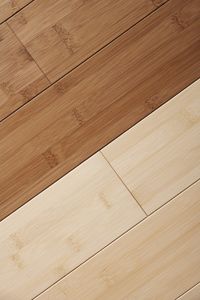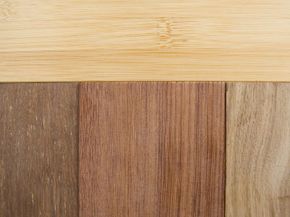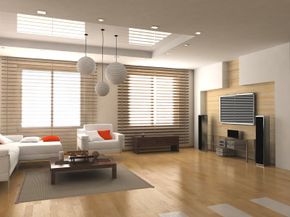Hardwood flooring has been all the rage with homeowners in recent years. Hardwood floors can increase the value of your home tremendously, are easy to take care of and can be installed by you or a professional. Wood floors are also great for people with allergies. Unlike carpet, which traps dust mites and other allergens, wood can be easily swept and cleaned. The wide variety of woods available makes it a great flooring choice for any budget.
In the age of green building, bamboo flooring has become a major player in hardwood options. An incredibly durable, versatile, sustainable and price-competitive form of hardwood flooring, bamboo has become the floor of choice for many people building or renovating homes with an eco-friendly edge. In fact, what makes bamboo so unique and appealing as a flooring option is its sustainability. Bamboo is considered a rapidly renewable source of wood. When it's cut, the root of the bamboo stalk stays in the ground. It grows back to a mature height in anywhere from three and a half to seven years. Then, it's ready to be cut again. That's incredibly fast, considering a tree such as an oak can take more than 120 years to be strong enough to be harvested for wood!
Advertisement
Bamboo floors are also very popular because they give a stunning look to any room and can be adapted to any decorating style. Bamboo itself can also be dyed into many colors or kept completely natural, finished or unfinished. The choices are almost infinite. You can also find bamboo at reasonable prices, which makes it a wonderful option for redecorating on a budget.
You may be wondering about the various style options, installation, maintenance and why bamboo flooring may not be as eco-friendly as it seems. First, let's find out how bamboo flooring is made.
Advertisement



